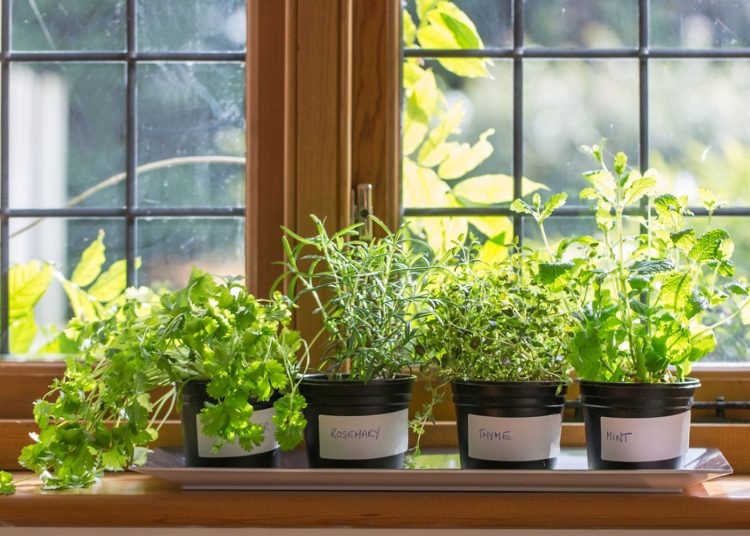Updated on April 1st, 2022
Fresh herbs are always available if you establish your own indoor herb garden. Fresh herbs, such as parsley and cilantro, may transform an ordinary supper into a five-star dish. However, buying herbs at the grocery store might leave you with far more than you need, and pestos can only be made during the summer months if you have a backyard garden.
You'll need to bring the garden indoors to have fresh herbs all year. You'll not only have the fresh ingredients you need, but your growing greens will also provide a little life and air to your room.
These indoor herb garden ideas can make your room look—and smell—great, whether you're ready for a little sage plant in your kitchen or want to delve into a whole garden.
1. Abundance of Light
The more light you can supply, the better off your indoor herb garden will be. Did you realize that the brightness of the light affects the flavor of your herbs?
Herbs cultivated in bright light will almost always have the finest taste. Their development is also aided by bright, intense light. One of the most critical aspects of successfully growing herbs indoors is having enough light.
Herbs require 6 to 8 hours of direct sunshine to thrive. Indoor herb gardening is best done in a bright, sunny window or sunroom. The greatest option is to have windows that face south.
Living in a place with insufficient light? Try out the Hydroponics Growing System
AeroGarden has developed a variety of indoor growing systems like AeroGarden Harvest and AeroGarden Bounty Elite that include an LED light system built into the herb planter. You may also cultivate herbs that thrive well with a bit less sunlight. Mint, parsley, and chives can withstand less than 6 hours of direct sunshine.

2. The Right Temperature
Another key component in effectively growing herbs indoors is temperature. The optimal temperature for most herbs is 65 to 70 degrees Fahrenheit, which is perfect for most residential settings.
When you wish to slow down the development of your herb plants, you might lower the temperature to 60-65 degrees Fahrenheit.
3. Watering Your Herbs
Indoor herb gardens must be watered on a regular basis. You should never let them dry out, but you should also avoid overwatering them. Check your indoor herb garden on a regular basis and water it when the top layer of soil feels dry, even though the lower layer is still moist if you dip your finger into it. Once a month, add a little amount of water-soluble fertilizer to the water to assist the herbs to acquire the nutrients they require.
4. Choosing The Right Pots
When growing herbs indoors, choosing the right pots or containers is critical to your success. The most crucial factor is ensuring that your herb pots have enough drainage. Any container used to cultivate herbs inside must have sufficient drainage holes.
Because herbs dislike being maintained in standing water, there must be a mechanism for the water to drain from the pot.

Check out:
- Self Watering Planter Pots
- Gardenix Decor 5" Self Watering pots for Indoor Plants - Flower Pot with Water Level Indicator for Plants
Looking for more indoor herb garden kits? Don't forget to explore the Click & Grow Indoor Herb Garden Kit with Grow Light.
We hope you love our reviews! For your information, we do earn money from commission in the link in the content! For more information click here!














